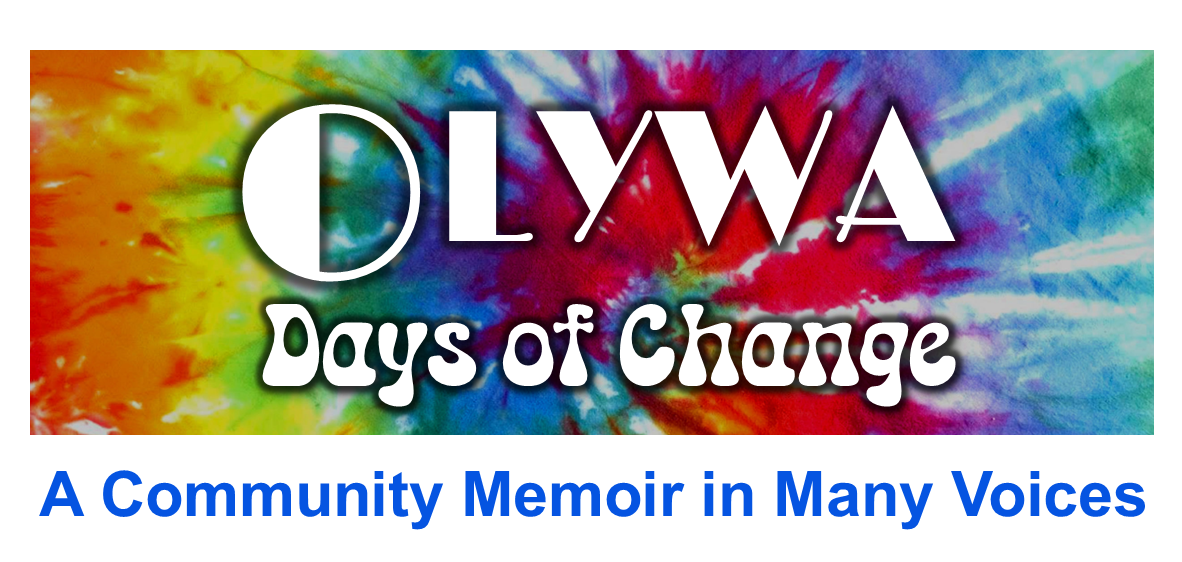ARTS
Olympia Film Society (OFS) – Origin Story
By Dennis Bloom
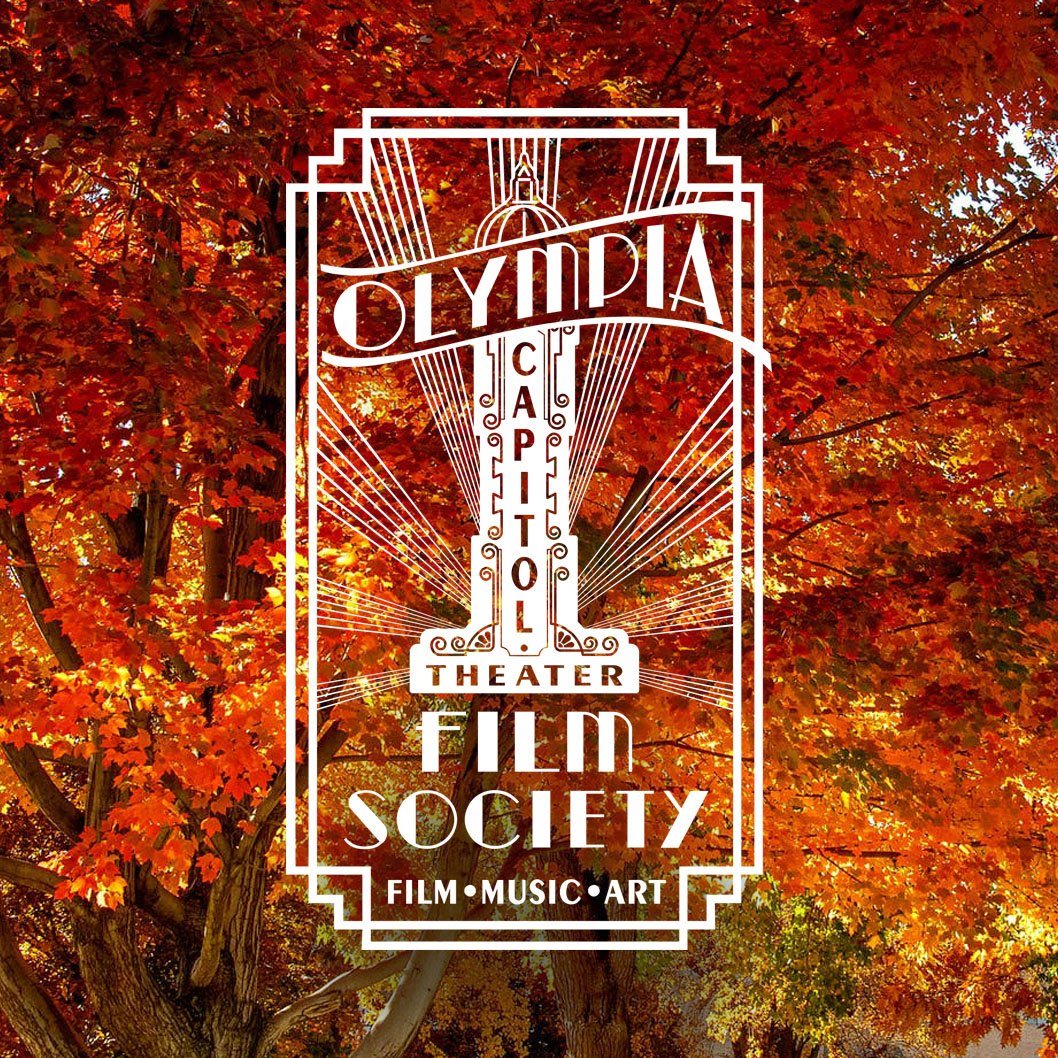
Ya’ know, some stories can take on a world of their own. Or as a newspaper editor once quipped when I quizzed him about the accuracy of an article, “Well, that’s why they call it a story!”
So, here’s a story. It’s been almost 46 years since the start of a film collective in Olympia got rolling. And while many of the particulars have been spoken about before, I’ll do my best to recount those initial efforts. Given the passage of time, there are a few things I won’t get exactly right and other items that probably could make for an interesting screen play. But recalling peoples’ names is not something I can easily pull from the cobwebs of recollections gone by. Since I’ve only been in touch with a few original OFS members, it’ll be simpler to try to recall first names of participants. For those interested in specific ruminations, you might consider contacting current OFS staff directly to review the collection of artifacts and memorabilia they now possess.
So, let’s venture back to “a long time ago in a galaxy far, far away.” Back in early 1979 (or was it somewhere during late 1978?) fax machines existed, the public internet did not. “You’ve got mail” wasn’t a thing yet, nor the computer in your hand we refer to as a “mobile device.” Those things are so ubiquitous now in our daily lives, if they had been around back in the ’70s this would be a very different story. Heck, we’re talking way back when daily newspapers were still the main source for information of what was going on locally, regionally and nationally. You may have even run into a newspaper reporter having breakfast at the Spar restaurant in downtown Olympia. Others might recall when the local Daily Olympian ran a list in their Friday entertainment section of theaters in the region. It listed all the movies and times of those shows. Or you could call a theater and talk to a real person to get those schedules.
But to understand part of the history of why the OFS came about you’ll need a little background about what was going on in the late ’70s. Olympia (which had—and still has—the only “urban downtown core” in our tri-city area) had three movie theaters. There had also been a small movie theater called the Cinema, housed in a converted church out on 4th Ave, where Pacific Ave veers off toward Lacey. The Evergreen State College (TESC), too, had its own Friday night film series, held in the lecture hall in the center of campus. Around this same time the movie theater business was in transition. Some older and larger “movie palaces” that dated back to the 1920s, were getting renovated into “multiplex” theaters. Theaters that had one big screen were getting partitioned into two, three, or more smaller rooms, with smaller screens. This happened to the State Theater on 4th Ave. But it allowed those theaters to show a slew of different movies on the same day (just as they do now).
The Movie Scene in the ’70s
The Olympia/Lacey/Tumwater area also started attracting larger movie theater chains. Their business model was to house many screening rooms in a single building. And those were built in or near large shopping centers, with lots of free parking. Typical of those times, when shopping malls were also getting built, these new theaters were located in the malls or outside of a downtown core, where movie theaters had traditionally been established. And as home TV technology was also changing, the beginning of home movie video rentals was starting up.
Not as well known, the movie theater business also relied on several film distribution networks. Which is still true today. Without going into the minutia of how this works or what a theater chain might have negotiated for the rights to show a particular movie, the distribution networks controlled not only the movies shown, but where and for how long it stayed in a particular local market. Sometimes a local theater owner could negotiate a longer holdover if a movie was popular, but if you lived in a smaller populated area, like Olympia, the rotation of movies was limited. Usually, we only got a choice of the standard fare of Hollywood releases. But if you wanted to see a movie that was considered more of an “art film,” you had to drive to Seattle or Portland to see it.
Both Seattle and Portland had a number of smaller movie theaters, usually with a single screen or a couple of smaller rooms. They showed films whose story lines were of a certain genre or theme, produced by a director who had a particular point of view, whose cinematographer filmed from a certain perspective or lit scenes in a particular way, and maybe with a soundtrack that really added more depth to the overall feel of the film. At least for me, many of these films felt more immersive. This appealed to those of us who thought of movies as an art medium sometimes referred to as “cinema.” Some referred to these smaller theaters as “art houses.” You might even catch a “foreign film” there. Or if they didn’t show mainstream Hollywood formula films, the movie might have been made by an independent film producer who didn’t follow a typical Hollywood style or participate in the usual film distribution networks.
During those years it was common for people living in the Olympia area to jump into a car and drive round trip, 120+ miles, to Seattle to catch an “art film.” Many people that I knew thought of it as a pretty standard thing to do. Especially if they wanted to see a movie that did not have a snowball’s chance of making it to a screen in our area. Maybe it had something to do with being in our twenties or thirties, and a bit footloose. Just to give a little perspective, an internet search says 1978 gas prices were around 70 cents a gallon. A movie ticket cost around $2.50. So, sharing the cost of a ride to Seattle was a big help.
Full Frame Consciousness
Those trips to Seattle or Portland to see a movie were part of the impetus for many of us to think there had to be a better option. I think it also reflected the limitations of the movie distribution network. I recall talking with the local theater managers to ask them what it would take to see something that was outside of their usual offerings. The response was, “Our hands are tied.” But once the Olympia Film Society got underway it opened up a different approach for what could be accomplished locally.
Like many self-startups, the OFS endeavor was a labor of love. And to that end it would not have happened without the efforts of a core group of volunteers who felt the same way. In fact, when our initial efforts seemed to strike a note, it was sort of unexpected. But it confirmed and galvanized what we had been hearing and discussing with other film buffs. Until that time, getting movies we wanted to see locally had only existed as a concept. But I’m getting a little ahead of the other part of this story.
This pretty much happened in the late ’70s. My “significant other,” Myra, and I were living and working in Olympia. A close friend of ours, David, had moved back to the east coast for other adventures. A couple of years had gone by, and David eventually found himself at loose ends. So, we were trying to figure out what might entice him to come back. And we landed on something that David and I had in common: movies.
David and I had met in our early teens around the mid-1960s. We had similar interests, one of which was going to the movies. That also meant critiquing and analyzing, reading about film directors, checking out surrealist and avant-garde approaches to film making, and experimenting with multitrack recordings. A fascination with film as a medium. We were also influenced by David’s uncle, who was well known at the time in New York movie theater and film distribution circles. This allowed us to venture around to any number of theaters, especially the “art houses” that showed foreign films by the likes of Truffaut, Godard, Fellini, Bergman, Malle, Fassbinder, etc. And over those “early years” (and many after) we individually pursued different approaches to our common interest. But those interests were also steeped in art, literature, music, graphics, photography, textures, some hocus pocus, and that flickering light projector. It had built a strong bond. Or as David once noted, we were trying to develop a “full frame consciousness,” of what was being played out on film and the perceptions we were trying to articulate.
Before David returned to Olympia, another friend, John, and I started our own consulting business. We set up shop in a downtown studio office space, a flight up from the art gallery/store, Childhood’s End, on 4th Ave. John and I had worked at the state’s Office for Economic Opportunity. Our work at the state and our previous involvement with community organizing in lower-income communities would eventually help with getting involved in the OFS.
OFS Gets Underway
Living in the Olympia area included another pivotal element. Having an interest in “community- based” radio stations, I became a community volunteer at KAOS, Evergreen’s radio station. Over the course of a few years, I had put together a few late-night, eclectic music shows with a couple of friends (David being one of them) and a couple local news programs. By the time David had returned to Olympia, Myra and I were just starting to consider what it would take to get the OFS off the ground. A connection through KAOS, and David’s previous attendance at Evergreen, allowed David and me to connect with the college’s public relations/graphic arts crew. In many ways the OFS relied on, and survived its early days, based on an ability to reach out to the public. And that would not have been possible without the support of Evergreen’s graphics staff. The person who I recall was Brad (or was it Tim?). He oversaw the group of four or five people in that office. And on their own time they provided advice, support, and help to produce communication tools: publishing a newsletter, a calendar of upcoming movies, event posters, and eventually the OFS Film Festival programs. Their creativity—and the fun we had with them—went a long way in helping us get the OFS off the ground and to establish it as a collective.
The first step in gathering interest for the OFS was actually a very simple poster that featured a frame from a Charlie Chaplin movie. I posted it around the Olympia, Lacey, and Tumwater area. I think there was a small run of about 30 posters on heavier glossy stock paper (about all we could afford). I tacked them up at libraries, community bulletin boards, and telephone poles. I hung a few in some downtown Olympia restaurants and at TESC. The poster simply asked something like, “Interested in a film?” There was a small tear-off form for a name, address and phone number. Then you could stuff that piece of paper back into a small box that was folded and taped into the poster. That was it. In probably less than a week we had close to 100 names. Within the next couple of weeks, we contacted everyone (whose handwriting we could read!), both to assess interest and to see if they would come to a first meeting.
I don’t recall how many people showed up, but maybe around a dozen for that first gathering. And with John’s help, we laid out an organizational plan for taking next steps: developing a volunteer board, raising initial funds, and discussions on the direction the group wanted to go in. We shared stories of what movies we liked and what interest there might be to get the word out to others. But it was equally exciting that the core group lived in town. Some worked for state agencies and others worked for or were involved in a local business. What we guessed would mainly be interest from college students turned out to be people who had lived and worked in the area for a few years. That initial gathering took place at the Café Intermezzo—Carolyn’s coffee shop on 4th Ave. We all agreed that the best way to run the organization was as a collective, to pool our resources together and work cooperatively.
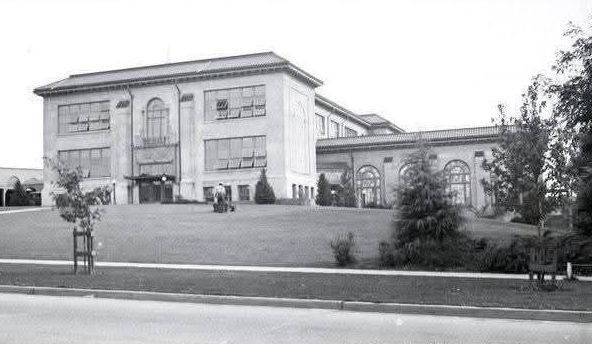
I recall people agreed to chip in financially at that first meeting. And we would need to rely on volunteers. Membership “dues” would be needed to help offset costs. We also needed to figure out how to reinvest back into the organization. We relied on those who had previous experience with food co-op participation or shared communal living arrangements, where shared responsibilities were part of how it functioned. Our hope was that we would be able to attract a larger audience and thereby increase membership. And, by the way, was anyone actually interested in volunteering to be on the board?! I think it was in early 1980 when John and I had put together the first bylaws for a nonprofit for the board to consider. It was John who came up with the organization’s memorable preamble.
We set up OFS files in my office on 4th Ave. Over the next couple of months, David worked out the details of negotiating with film distributors. Then there was deciding on film choices, finding a location to show a movie, how to promote it, finding a projector, screen, a sound system, etc. It was an exciting time, but with lots of unknowns as the OFS started to come together. After David figured out we could only rent or afford films from certain film distributors, we booked a couple of classic Alfred Hitchcock movies. I don’t recall the date of those first shows, but we rented the large auditorium in the old Washington School on Eastside Street and 7th Ave. Our volunteer leaders, Mike and Julie, organized a small crew, scaled ladders and hung huge black plastic sheets over the large glass windows. We were also very fortunate to have gotten a well-known local projectionist who helped us set up the screen and sound system. I don’t think we were quite prepared for the number of people that showed up. The first few shows didn’t have food concessions either.
A New Location
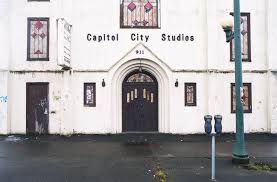
A few months later, after knocking on lots of doors, we were very fortunate to be able to work out a rental agreement with Alan to use his Capitol City Studios on 4th Ave. At the time, Alan had turned what had been a church into a recording studio and music hall. It had plenty of seating, a stage and a small balcony to project from. He later generously helped OFS acquire a new and larger screen. We also acquired a better projector, put together a small concession stand with Blue Heron Bakery goodies, and eventually added a popcorn machine. Landing at Capitol City Studios was a big deal. Not only did the space allow more people to attend OFS movies, but membership climbed. And running those shows wouldn’t have happened without the many volunteers who stepped up to help. By the time I moved away from Olympia in late fall of ’82, the OFS was well underway and established.
The board was actively involved, a couple of smaller working committees helped out with regular chores, and while there was an ongoing need to recruit more volunteers, OFS was running and had become self-sustained. Not easy by any stretch, but it was working. As I mentioned earlier, unfortunately, I do not recall all the people who actively volunteered and/or had come together to get the “idea of a film society” off the ground. But it was impressive. The board was ever grateful to those involved in the first few years since it would not have happened without the support of many.
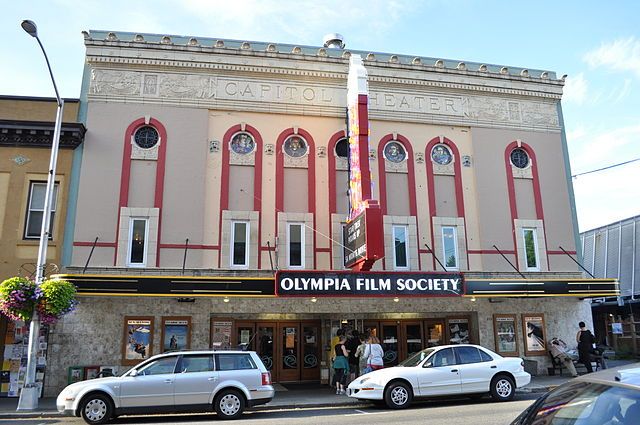
Whether it was to join or to simply see a movie at a local theater, the fact that OFS is still operating in 2025 means, to me, it’s a testament to the ongoing support the organization has enjoyed. Today the OFS is much more than what was initially envisioned. It has grown to encompass film, music, and art. It has taken on many more responsibilities, including renovating a historic theater. And it now offers more entertainment options to those of us who live in the South Puget Sound. Here’s to many more years of the Olympia Film Society!
We encourage readers to contact us with comments and corrections. Disclaimer
